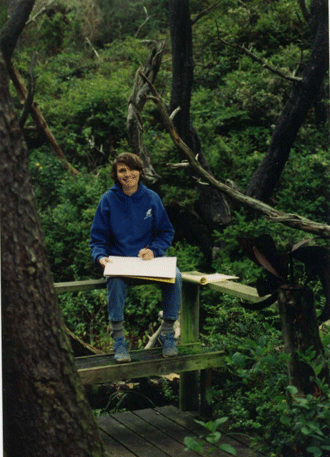How to Become a Slightly Warped Cartoonist: Part 11
If you’ve tried all the techniques I’ve mentioned, and still can’t come up with funny ideas, don’t give up immediately. Like other muscles, the humor muscle takes time and practice to build. I had a five-year-plan when I quit my secure well-paying government job and started cartooning full-time in 1981.
Year one: I’d sell to small magazines and trade journals.
Year two: I’d sell to The Majors
Year three: I’d sell to the New Yorker.
Year four: I’d sign a contract with a cartoon syndicate.
Year five: I’d be able to afford to move out of the basement room I was renting in a group house in Washington D.C.
I drew 10 cartoons during my first week as a “professional cartoonist.” At the time I only liked six of them. Now I look at them and think, “You actually thought this stuff might sell?”
I took all of them to the editorial offices of the Intowner, a free neighborhood magazine. The editor picked the one I liked least and the very first cartoon I drew as a professional.
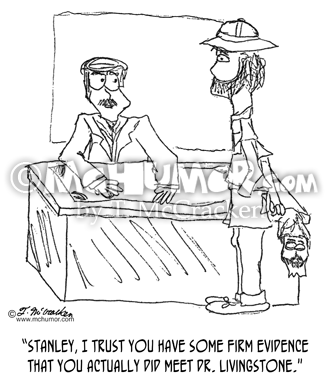
The first cartoon I drew professionally
License Africa Cartoon 0001
The editor paid me $20 on the spot. “Wow,” I thought. “This is going to be a breeze. I needn’t have bothered saving half my salary for the previous three years.”
It was another ten months before I sold another cartoon and another ten years before I moved out of the basement.
As I said in Part 1 of this series, it takes about 10,000 hours to master anything worth mastering. That’s five years worth of forty-hour-weeks. Sorry, there’s no way around it for most of us.
If you’re starting out cartooning and have great gags spewing out of your head and are drawing well-crafted cartoons, what are you doing reading this? You don’t need advice from me. I hope you’ve at least enjoyed my cartoons.
In 1982 I also only sold one cartoon. I consoled myself by saying that at least I’d sold twice as many pieces of art as van Gogh sold in his entire career.
I sold my third cartoon in 1983 to Restaurant and Hotel Magazine. It was the 643rd cartoon I drew and shows definite improvement over the first one.
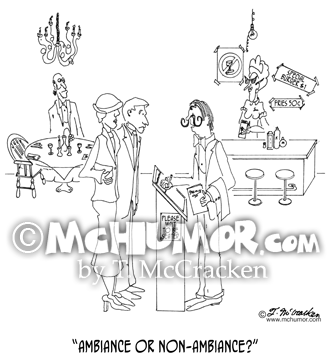
The 643rd cartoon I drew.
License Restaurant Cartoon 0643
Get it Printed on Stuff @ CafePress and Zazzle
I sold two more cartoons that year.
To recap, in three years as a full-time cartoonist I only managed to sell five cartoons for a total of $90. By then I was thinking maybe I should have saved more than half my salary for three years before venturing on this quest.
In 1984 I sold over 100 cartoons. One of those was to Artist’s Magazine. While Artist’s Magazine wasn’t one of The Majors, you could buy it at a good-sized newsstand. It was the 1,106th cartoon I drew.

The 1,106th cartoon I drew.
License Shakespeare Cartoon 1106
Get it Printed on Stuff @ CafePress
In 1986, at about the 10,000-hour-mark, in my career I was earning enough to start saving money again.
In 1987 I sold my first cartoon to what at the time was considered one of The Majors, The Saturday Evening Post. It also happened to be my grandfather’s favorite magazine so that was an especially satisfying sale. It was the 2,838th cartoon I drew.
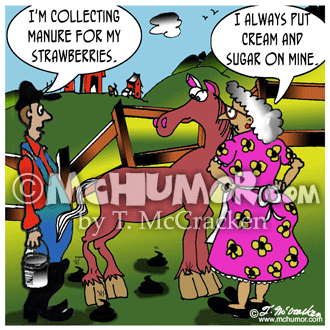
The 2,838th cartoon I drew.
License Horse Cartoon 2838
Get it Printed on Stuff @ CafePress
In 1989 I sold my first cartoon to King Features, a cartoon syndicate. They had started a single panel cartoon, The New Breed. Several cartoonists contributed to it and King only paid $50 a cartoon. It wasn’t quite the contract I had dreamed of eight years earlier, but I still crossed off signing a contract with a syndicate from my bucket list. It was the 4,801st cartoon I drew.
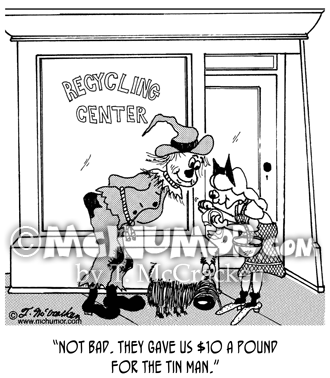
The 4,801st cartoon I drew.
License Recycling Cartoon 4801
Get it Printed on Stuff @ CafePress
By 1991 I’d saved enough to buy a few acres in the boon-docks of Oregon and a leaky trailer with no running water or electricity. I moved out of the Washington D.C. basement into the trailer and began building a cabin.
In 1997, sixteen years after I began cartooning professionally, I was living in the cabin mortgage free. I still haven’t had anything published in the New Yorker. Maybe the 20,000th cartoon I draw will be the one.
Came in at the end of the series? Go to Part 1

